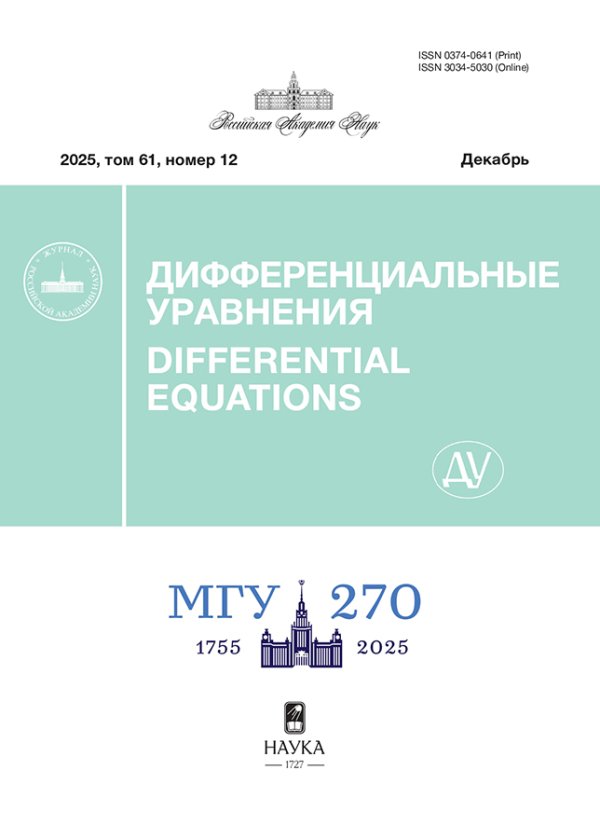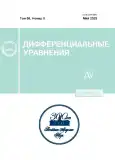On the Existence of Solutions of Degenerate Discrete-Time Systems
- Authors: Shcheglova A.A1
-
Affiliations:
- Matrosov Institute for System Dynamics and Control Theory, Siberian Branch, Russian Academy of Sciences, Irkutsk, 664033, Russia
- Issue: Vol 59, No 5 (2023)
- Pages: 675-692
- Section: Articles
- URL: https://journals.rcsi.science/0374-0641/article/view/144959
- DOI: https://doi.org/10.31857/S0374064123050114
- EDN: https://elibrary.ru/CZRUCX
- ID: 144959
Cite item
Full Text
Abstract
We consider a nonstationary linear discrete-time descriptor system with rectangular matrix coefficients defined on a finite horizon. An answer is obtained to the question as to what the largest number of unknown vectors that can be found from a given finite number of equations is. In a similar way, the solvability of nonstationary linear continuous- or discrete-time systems, as well as (in the local sense) nonlinear discrete-time systems, is studied. It is shown that in cases where the considered linear (or nonlinear) system retains its internal structure, it is possible to find its solutions on an infinite horizon. The proposed approach has sufficient generality and automatically solves the problem of consistency of the initial data.
About the authors
A. A Shcheglova
Matrosov Institute for System Dynamics and Control Theory, Siberian Branch, Russian Academy of Sciences, Irkutsk, 664033, Russia
Author for correspondence.
Email: shchegl@icc.ru
References
- Luenberger A., Arbel D.G. Singular dynamic Leontief systems // Econometrica. 1977. V. 45. P. 991-995.
- Hemami H., Wyman B.F. Modeling and control of constrained dynamic systems with application to biped locomotion in the frontal plane // IEEE Trans. Automat. Control. 1979. V. 24. P. 526-535.
- Stevens B.L., Lewis F.L. Aircraft Modelling, Dynamics and Control. New York, 1991.
- Zhai D., Zhang Q.L., Li J.H. Fault detection for singular multiple time-delay systems with application to electrical circuit // J. Franklin Inst. 2014. V. 351. P. 5411-5436.
- Zhao F., Zhang Q., Zhang Y. $H_infty$ filtering for a class of singular biological systems // IET Control Theory Appl. 2015. № 9. P. 2047-2055.
- Zerrougui M., Darouach M., Boutat-Baddas L., Ali H.S. $H_infty$ filtering for singular bilinear systems with application to a single-link flexible-joint robot // Int. J. Control Autom. Syst. 2014. № 12. P. 590-598.
- Balaji S. A new Bernoulli wavelet operational matrix of derivative method for the solution of nonlinear singular Lane-Emden type equations arising in astrophysics // J. Comput. Nonlin. Dynam. 2016. V. 11. № 5. P. 051013-11.
- Dai L. Singular Control System. New York, 1989.
- Kaczorek T. Linear Control Systems. New York, 1992.
- Белов А.А., Курдюков А.П. Дескрипторные системы и задачи управления. М., 2015.
- Cao M., Liao F. Design of an optimal prewiew controller for linear discrete-time descriptor system with state delay // Int. J. of Systems Sci. Principles and Applications of Systems and Integration. 2015. V. 46. № 5. P. 932-943.
- Гантмахер Ф.Р. Теория матриц. М., 1988.
- Debeljkovic D., Stojanovic S., Nestrovic T. The stability of linear continuous singular and discrete descriptor time delay systems over the finite time interval: an overwiew - part II discrete case // Sci. Tech. Rev. 2012. V. 62. № 2. P. 62-75.
- Hadjmohammadi R., Mobayen S. An efficient observer design method for singular discrete-time systems with delays and nonlinearity: LMI approach // Scientia Iranica. D. 2017. V. 26. № 3. P. 1690-1699.
- Lin Y. Observer design for rectangular discrete-time singular systems with time-varying delay // Int. J. Phys. Sci. 2012. V. 7. № 3. P. 423-431.
- Men B., Zhang Q., Wang G., Zhou J. Stabilization of discrete-time switched linear singular systems via a stochastic approach // Appl. Math. Inf. Sci. 2013. V. 7. № 2L. P. 631-637.
- Kaczorek T. Positive descriptor time-varying discrete-time linear systems and their asymptotic stability // TransNav. 2015. V. 9. № 1. P. 83-89.
- Nikoukhah R., Willsky A.S., Levy B.C. Kalman filtering and Riccati equations for descriptor systems // IEEE Trans. Aut. Control. 1991. V. 37. № 9. P. 1-36.
- Чистяков В.Ф., Щеглова А.А. Избранные главы теории алгебро-дифференциальных систем. Новосибирск, 2003.
- Шилов Г.Е. Математический анализ. Функции нескольких вещественных переменных. М., 1972.
Supplementary files










